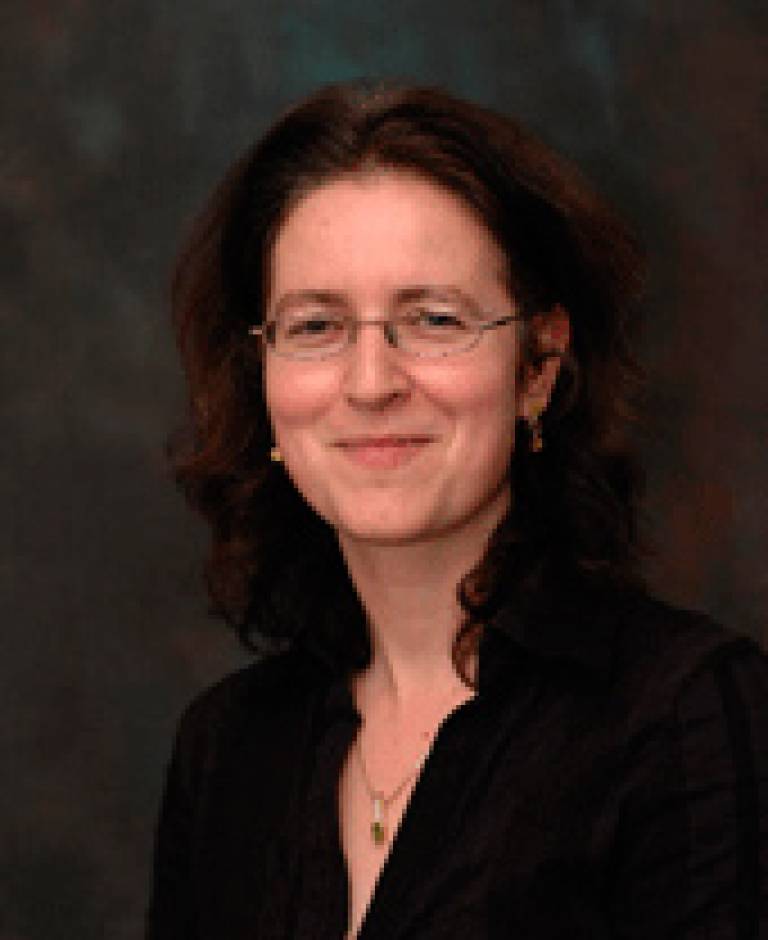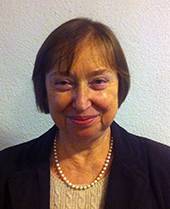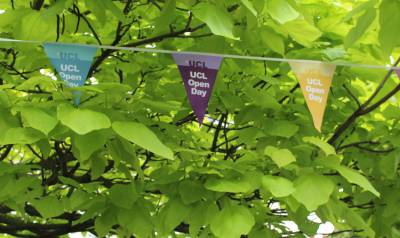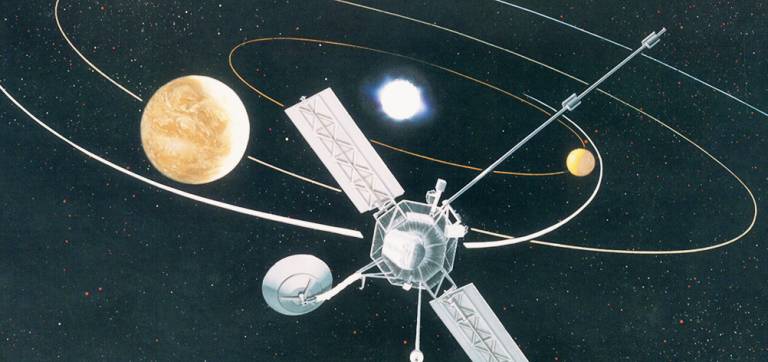UCL scientists honoured in annual RAS awards
12 January 2015

Two UCL scientists and one scientific collaboration led by a UCL researcher have been recognised in this year's Royal Astronomical Society Awards.
Royal Astronomical Society Group Achievement Award
The Hinode Extreme Ultraviolet Imaging Spectrometer team, led by Prof Louise Harra (UCL Mullard Space Science Laboratory) wins this year's RAS Group Achievement Award.
The Hinode spacecraft is a mission to study the Sun, from its photosphere to its extended corona, at high spatial and spectral resolution. Launched in September 2006, it carries three instruments, one of which is the Extreme Ultraviolet Imaging Spectrometer (EIS). EIS is designed to carry out imaging spectroscopy measurements and perform quantitative plasma diagnostics of the solar corona over a broad range of plasma temperatures, from the quiet Sun to the hottest parts of solar flares.
The instrument has been an unqualified success. It has operated flawlessly since launch, and produced data which have been shared internationally. EIS data have been used in around 900 refereed publications to date. Many scientific highlights have emerged, shedding light on: the heating and dynamics of the corona; the source and energisation of the solar wind; the presence of large and small scale hydrodynamic waves in the corona; and the properties of hot flaring plasma. The success of the instrument results from the close collaboration of British, Japanese, American and Norwegian teams who, in addition to their remarkable scientific advances, have provided outstanding support to the UK and international community.
Royal Astronomical Society Price Medal in Geophysics

The Price Medal is for single investigations of outstanding merit in solid earth geophysics, oceanography or planetary sciences. It is awarded to Prof John Brodholt (UCL Earth Science).
Prof Brodholt developed molecular dynamics programs to simulate liquids and applied them to H2O − CO2
fluid speciation in the crust and mantle. This equipped him to work on
intermolecular potentials for molecular dynamics simulations. He
combined this expertise with cutting-edge computer tools and studied
problems such as the effect of point-defect mobility on mineral creep
and the electrical conductivity of the mantle. He went on to work on
perovskite, post-perovskite, the transport properties of core liquids
and the iron phases of Earth's solid inner core.
This work is the most relevant of any computational mineral physicist's to earthquake seismology. He applied his methods also to planetary ice, the structure of nitrogen-water ices and clathrates, the properties of brines that may exist in Earth's crust, and the interiors of icy planets. In addition, he examined the possibility of radioactivity in the core, the subduction of banded iron formations in the early Earth, and core material incorporation into the base of the mantle. This work comprises an outstanding contribution to understanding the deep interior of Earth and the icy planets.
Prof Brodholt said: "Of course I can think of many more worthy recipients, but nonetheless I am very grateful and happy to receive this medal."
Royal Astronomical Society Service Award

The Service Award honours individuals who, through outstanding or exceptional work, have promoted, facilitated or encouraged the sciences of astronomy or geophysics and developed their role in the life of the nation but whose achievement does not fall within the criteria of the Society's other awards. It is given to Prof Lidia van Driel-Gesztelyi (UCL Mullard Space Science Laboratory).
Prof van Driel-Gesztelyi is a world-leading solar astrophysicist who has demonstrated exceptional dedication to supporting her research community, through a number of high-profile appointments. In the period 2006-2009, she served as secretary of the International Astronomical Union (IAU) Division II (Sun and Heliosphere), overseeing three Commissions. Over the last 10 years, she has served as Editor-in-Chief of the journal Solar Physics. Her dedication has seen the journal prosper, with its impact factor increasing by 72% between 2005 and 2012. This breadth of international experience and service culminated in her election as President of IAU Commission 10 in 2009. She is also a member of the Science Committee of the International Space Science Institute. In all these roles she has worked tirelessly to promote the science of solar physics.
She said: "The RAS Service Award came as a great surprise to me. Service to the solar physics community, what I have indeed done all my life, did not seem to be prize-worthy, at least not to me. I have to say, however, that I am very pleased by the recognition."
 Close
Close




